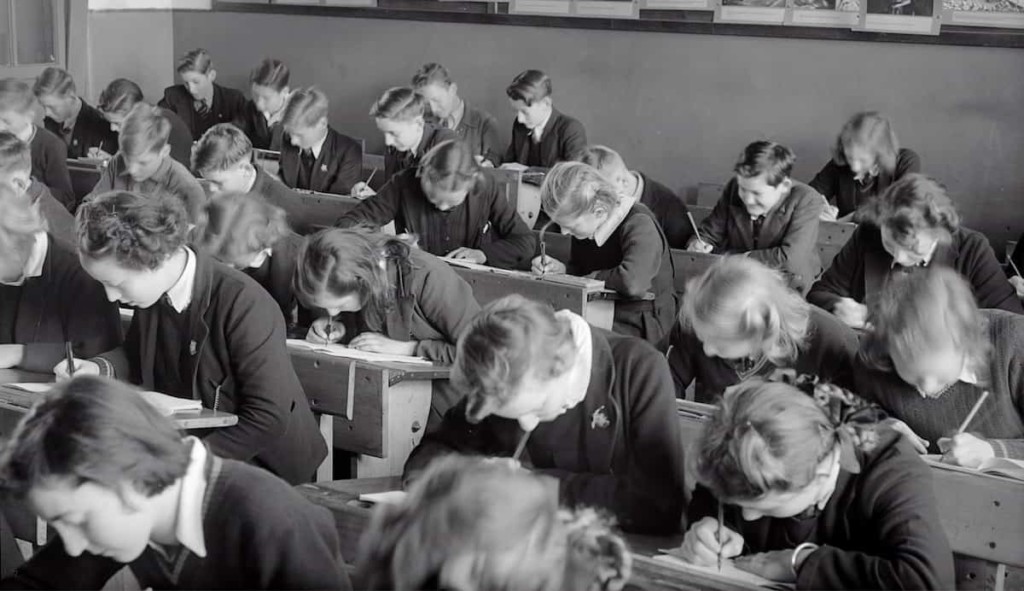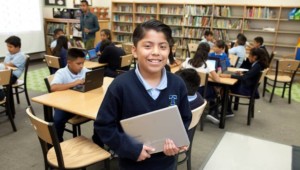Pandemic Opportunity: Rethink Education Accountability

For the last 25 years, America has tried yelling as it’s school improvement strategy. The bipartisan testing and accountability system erected in most states in the 1990s and then ensconced in federal policy as No Child Left Behind in 2001. Based on narrow measures of grade-level proficiency in math and reading, NCLB outlined stages of failure–which, not surprisingly correlated with poverty–and relied on focus, humiliation, and competition as change levers.
It didn’t work. Basic skills scores didn’t improve and it came with negative consequences of a preoccupation for what could easily be measured including months of test preparation, narrow curricula (especially for the kids that could have most benefited from the richness of the arts), and stifled innovation during the two decades when lots of money was spent on new tools and new schools.
There were two big problems with Accountability 1.0: it was a weak design (ie, narrow measures of proficiency rather than broad measures of growth) and it was a weak change strategy. While other countries were streamlining governance, building teacher capacity, and improving curricula, the US tried accountability as its improvement strategy.
Let’s recap the problem and the invention opportunity:
Problem: test-based accountability assumed that publicizing and penalizing poor performance on narrow measures of year-end proficiency would drive improvement. It didn’t work and came with unintended consequences of narrowed focus, fear-based culture, and stifled innovation (all while systems were incorporating new tools that created new opportunities).
Invention Opportunity: Accountability system that 1) uses new broader measures of learner growth embedded in the learning process (no more week-long or year-end tests) and 2) is accompanied by improved talent development, equitable funding, student and family supports, and school improvement networks.
In Most Likely to Succeed, Tony Wagner outlined five components of what he calls Accountability 2.0. They serve as a useful opportunity framework.
1. Don’t fix accountability, reconceptualize it. NCLB was a bad build on the Committee of 10 foundation on 1893. Just swapping a less awful year-end test for another won’t fix the problems. It’s time to update the mission of the school, focus on competencies that matter in work and life, and build new measurement systems that focus on the growth of individual learners (more than the end of year grade level proficiency) and take advantage of all the feedback that learners now receive in a digital learning environment.
In addition to a new design, we should keep in mind that Accountability 2.0 won’t create the schools our children deserve–it’s just a piece of the puzzle.
2. Focus on core competencies for work, learning, and citizenship. Wagner suggests a focus on “helping students develop the skill and the will to ask new questions, solve new problems, create new knowledge.” He sees a tripod of content knowledge, skill, and will as the foundation of 21st-century learning. Of the three, Wagner believes that “will, or motivation, is the most important, and the one damaged most by our schools today.”
Wagner suggests the key design question for any proposed change is “Will this “improvement” likely increase or diminish student motivation for learning and how will we know?”
For more equitable life outcomes, Christensen Institute’s Julia Freeland Fisher thinks we should intentionally help youth develop and measure their social capital (relationships and networks).
3. Forging a New Consensus on The Purpose of Education. The old mission of public education was (not subtly tracked) college or career prep. The new mission (subject to a conversation with your community) is whole learner development–youth equipped for lifelong learning and contribution.
The pandemic has made clear the vital role that schools can and should play particularly in underserved communities. Community schools can be a focal point for technology connections, coordinated wellness, and family support services.
4. Testing and Evaluating. “Our choice is stark, said Wagner, “We can focus classrooms on what’s easy to measure, or on what’s important to learn. But we can’t do both well.”
He suggests a competency-based system that invites redesign on two fundamental dimensions, “Do we want their learning to be shallow or deep? And do we want their primary focus to be subject content or critical skills?”
There are three big opportunities in testing and evaluation. First and short term, there are tests that better measure important skills including PISA and the College and Work Readiness Assessment Plus and, like NAEP, could be given to a sample of students (which would save millions that could be plowed back into teacher capacity development).
The second big long-term opportunity is to take advantage of the increase in the amount of formative feedback that many learners are receiving with the shift to digital learning. Feedback on 30 writing samples is better than a short year-end test essay and could provide much richer information about growth and application. Multiple and frequent forms of feedback could be collected in a comprehensive learner profile that could reduce and then eliminate the need for additional testing to verify growth and proficiency.
Finally, most developed countries use periodic inspection as part of their accountability system. In America, most states require accreditation but it’s infrequent, bureaucratic, and opaque. New accountability systems could incorporate an updated accreditation process which includes streamlined reviews of learner profiles and school inspections that result in candid and transparent observations of school quality.
As states update accreditation and incorporate it into the accountability system, they could align it with an updated charter school reauthorization process so that all schools in the state reported on and were reviewed against the same broad outcome framework.
5. A High School Diploma As a Certificate of Mastery. Thirty years ago, led by Mark Tucker, The Report of the Commission on the Skills of the American Workforce recommended concluding high school with a Certificate of Mastery. The core concepts remain innovative and important: initial credentialing of important life and work skills (around what is now tenth grade) and demonstrated achievement on a pathway to postsecondary success (high wage employment, further education, or a combination) as a high school diploma.
A transcript that summarizes a portfolio of evidence would help learners tell their story better than the current list of courses they passed and their grade point average. More than 300 of the best high schools in the world joined forces in the Mastery Transcript Consortium to help graduates describe their competencies and accomplishments more fully than a list of classes they passed.
Wagner’s five points provide a good start but an updated accountability system shouldn’t be relied upon to create equitable achievement. Evidence from other OECD countries suggests it will take streamlining governance, investment in teacher capacity, and stronger youth and family supports.
For more, see:
- Invention Opportunity: Creating a Shared Reality
- Reshaping Talent Development: Pandemic Edition
- The Biggest Source of Inequity Might Be the Way We Fund Schools
To help inform and deliver new agreements, new practices, and new tools Getting Smart and eduInnovation are exploring the Invention Opportunity thanks to support from the Walton Family Foundation and the Bill & Melinda Gates Foundation. The findings and conclusions contained within are those of the authors and do not necessarily reflect positions or policies of the foundations.
Stay in-the-know with innovations in learning by signing up for the weekly Smart Update.








Brig
Very thought-provoking and timely article...and yes, I did have a drill sergeant yell at me. Not fun.
Dennis
Tone: Some of what I see in this article, is to go back to basics. How many educators would agree that students of the predigital age had a more well rounded education that focused upon what this article is searching for. The students of the 60's and 70's did not have technology, but the learning of that time promoted the tech that we have now. It also seems like there were fewer assessments, leaving more time for quality education.